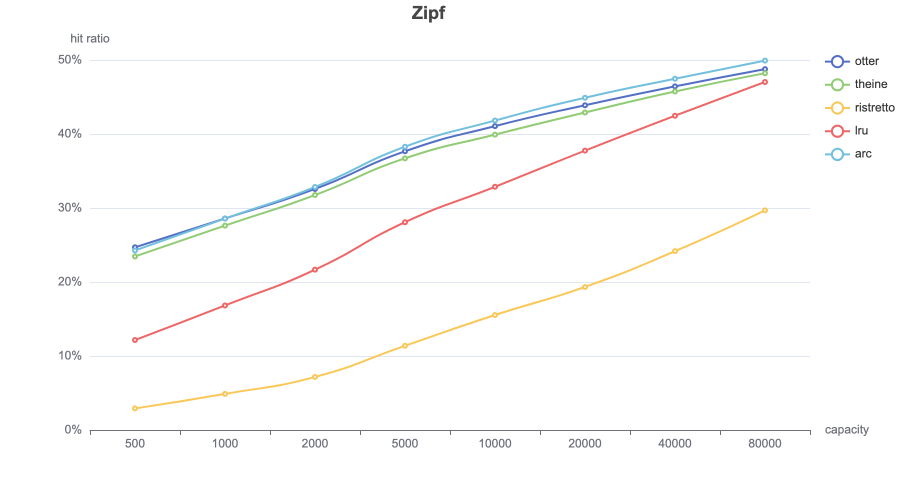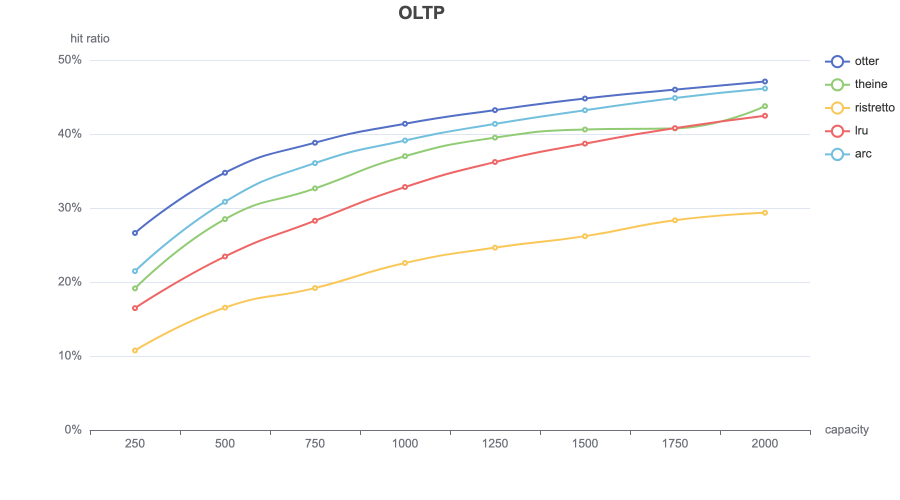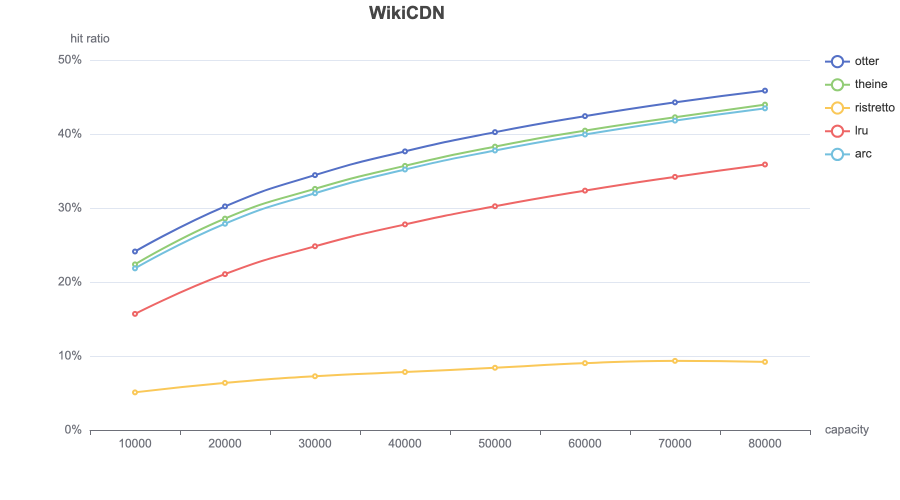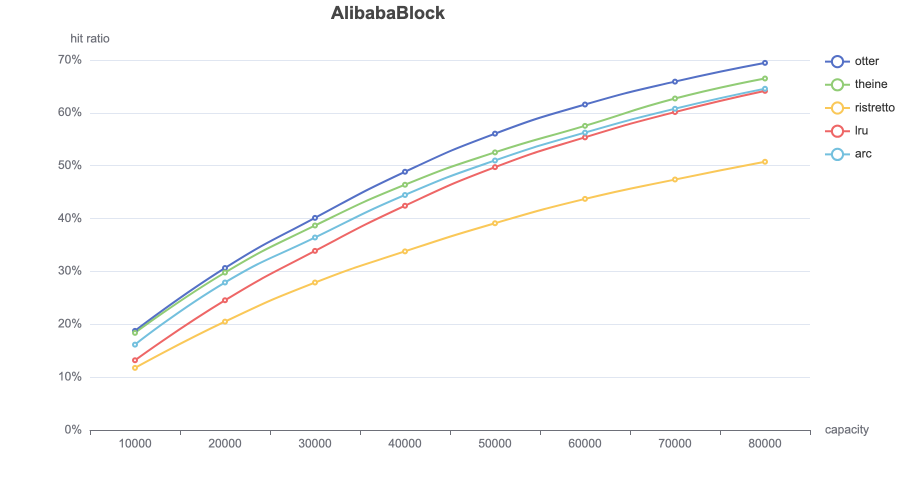Hit ratio¶
Traditional traces¶
Zipf¶
S3¶
This trace is described as "disk read accesses initiated by a large commercial search engine in response to various web search requests.".
DS1¶
This trace is described as "a database server running at a commercial site running an ERP application on top of a commercial database.".
P3¶
The trace P3 was collected from workstations running Windows NT by using Vtrace which captures disk operations through the use of device filters.
P8¶
The trace P8 was collected from workstations running Windows NT by using Vtrace which captures disk operations through the use of device filters.
LOOP¶
This trace demonstrates a looping access pattern.
OLTP¶
This trace is described as "references to a CODASYL database for a one-hour period.".
Modern traces¶
WikiCDN¶
This trace was collected from Wikimedia's CDN system in 2019.
AlibabaBlock¶
This trace was collected from a cluster in production of the elastic block service of Alibaba Cloud (i.e. storage for virtual disks) in 2020.
Twitter¶
This trace was collected from Twitter's in-memory caching (Twemcache/Pelikan) clusters in 2020.
Conclusion¶
S3-FIFO (otter) is inferior to W-TinyLFU (theine) on lfu friendly traces (databases, search, analytics) and has a greater or equal hit ratio on web traces. But it is still worth recognizing that W-TinyLFU is superior to S3-FIFO as a general-purpose eviction policy.
In summary, we have that S3-FIFO is competitive with W-TinyLFU and ARC. Also, it provides a substantial improvement to LRU across a variety of traces.









